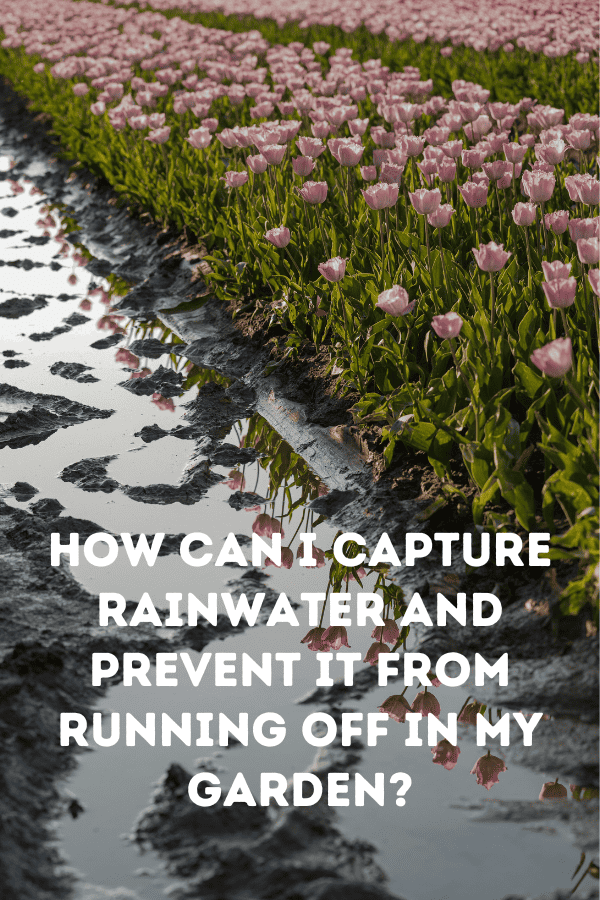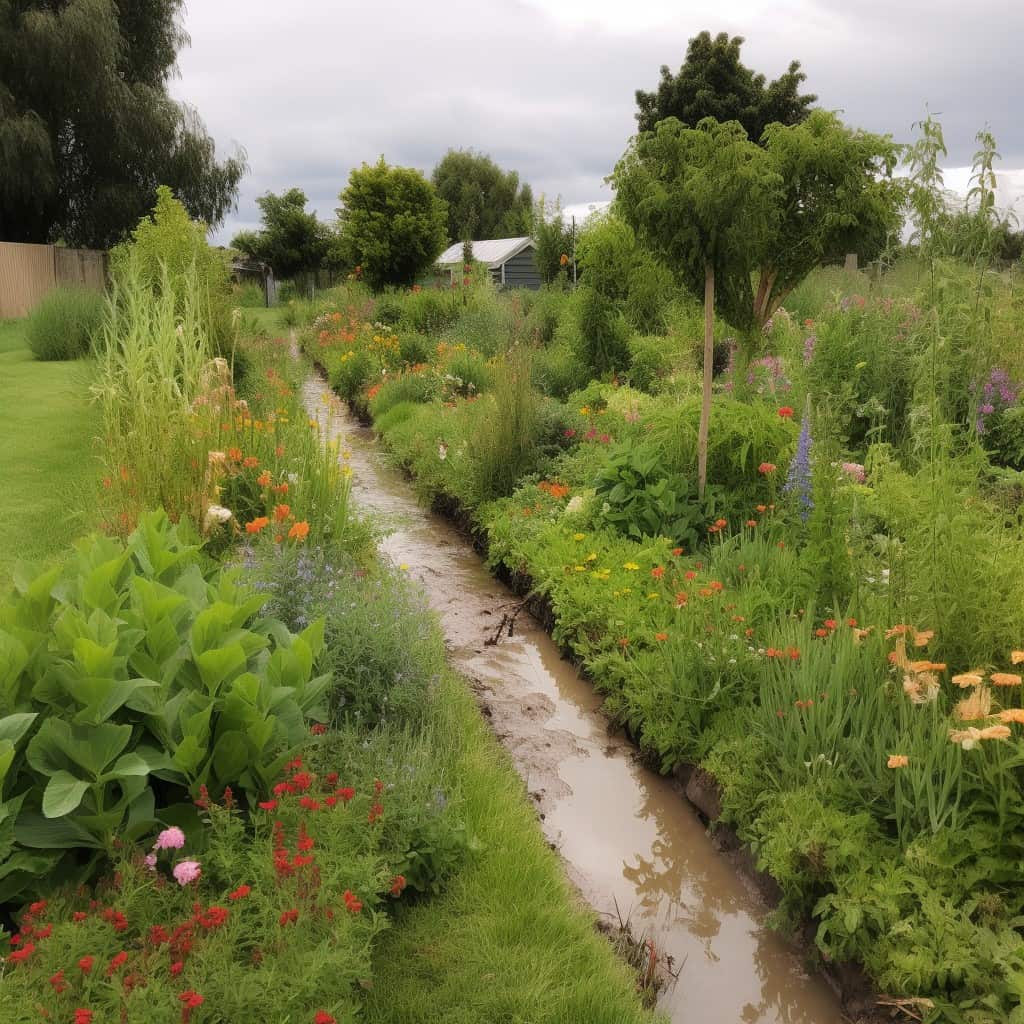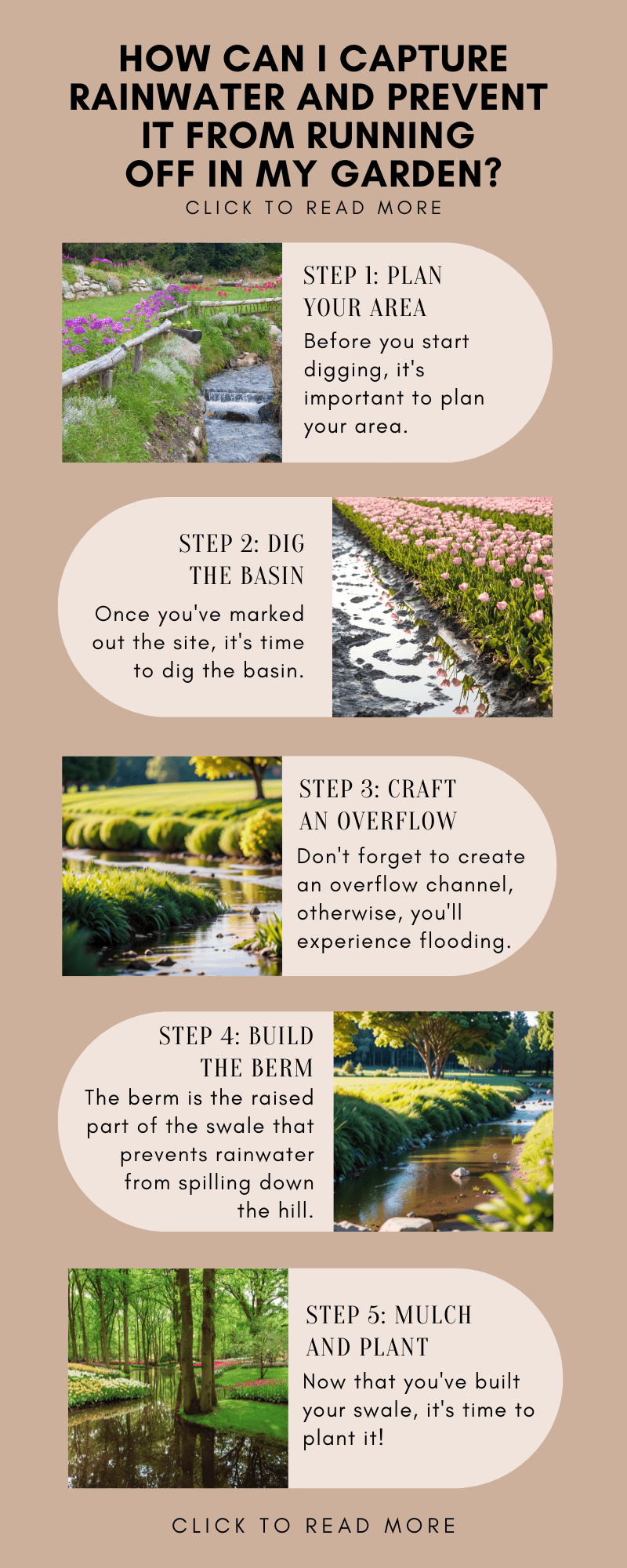
Are you looking for an effective way to capture rainwater and prevent it from running off? Building on-contour swales might be just the solution you need. Not only does this rainwater harvesting technique conserve water, but it can also create new planting areas in your garden. In this guide, we'll take you through the step-by-step process of building on-contour swales in your garden.
Save Water and Create New Planting Areas: Here's How to Build On-Contour Swales!
Step 1: Plan Your Area Before you start digging, it's important to plan your area. Ensure that the swale is at least 10 meters away from your house or building. You can use a laser level or an A-Frame and a level to mark out the site just above the problem area.
Step 2: Dig the Basin Once you've marked out the site, it's time to dig the basin. The depth of the basin should depend on the amount of rainfall you get in your area. A good rule of thumb is to consider the highest volume of rainfall for one event (on average) in your area.
To dig the basin, you'll need a pickaxe, hoe, and shovel. Use the pickaxe to break up the soil, then use the shovel to dig out the picked soil and place it on the downside of the basin to form the mound or berm. As you dig downwards, make sure the slope is no steeper than 1:3 on the inside of the basin, or the sides will start to fall in.
Step 3: Craft an Overflow Don't forget to create an overflow channel, otherwise, you'll experience flooding in a heavy rainfall event. The overflow channels should be toward the edges of the basin and should be placed about 3 quarters of the way up the basin. They should cut through the berm or mound and divert to another place where excess water can be drained, ideally a second swale a little further down.
Step 4: Build the Berm The berm is the raised part of the swale that prevents rainwater from spilling down the hill. It also serves as a landscaping bed to place crops and trees. To build the berm, place the excavated soil on the downhill side of the basin as you dig out the swale. This will start to form a mound as you go. However, it's important to tamp down the bed from the top to prevent the berm from falling down from rain or wind. Walk over the top and stomp on the mound until it has a flat top, ideal for planting.
Step 5: Mulch and Plant Now that you've built your swale, it's time to plant it! Make sure you sheet mulch the berm and the basin before planting. On the berm, you'll want to plant fruit trees and berry bushes as well as herbs, flowers, and climbers. In the basin, you'll need hardy plants that like water. If they are low-level, you may have to think about species that like shade as the mound can block out the sun.
Remember, swales should be combined with a series of rainwater harvesting techniques, and should only be used in appropriate scenarios. Do use swales if the slope is 3-15%, the soil is compact or has a shallow bedrock, the water table is high or the area is prone to flooding, you want less management of plants and would like to grow perennials, or the area of land is early in forest succession. Don't use swales if the slope is less than 5% or more than 15%, the soil is fertile and well-drained, you would like to grow annuals there, or you have mature forest land there.

We hope this guide has been helpful in showing you how to build on-contour swales in your garden. By capturing rainwater and preventing it from running off, you'll be able to create new planting areas and grow crops and trees with less water. Remember, planning your area and digging the basin and berm are the key steps to building a successful swale. Don't forget to create an overflow channel and sheet mulch before planting. And keep in mind the appropriate scenarios for using swales, such as when the slope is 3-15%, the soil is compact or has a shallow bedrock, and the water table is high or prone to flooding. Building on-contour swales may require some effort, but the benefits to your garden and the environment are worth it.
Embed this infographic on your site.

